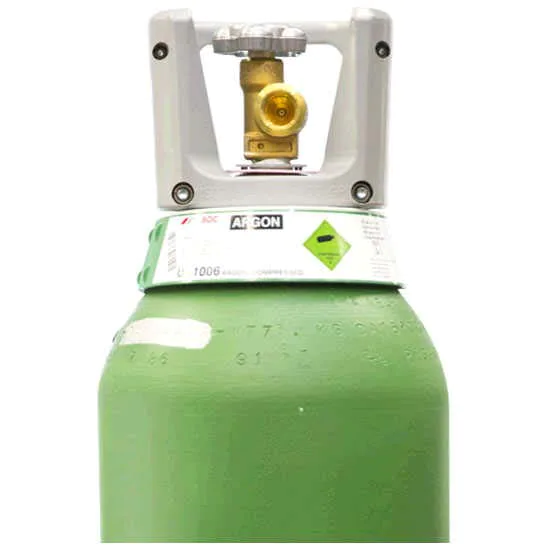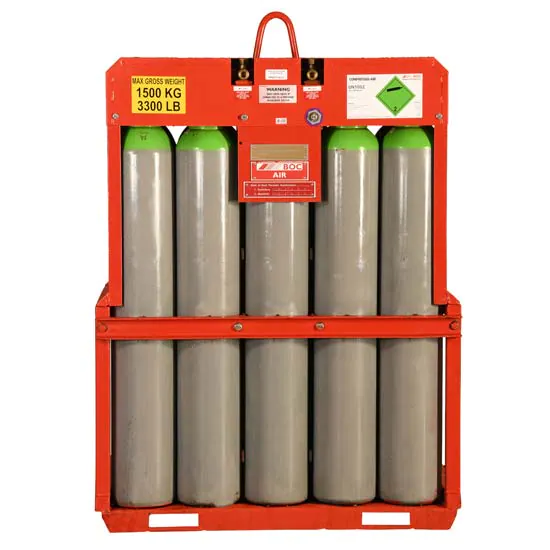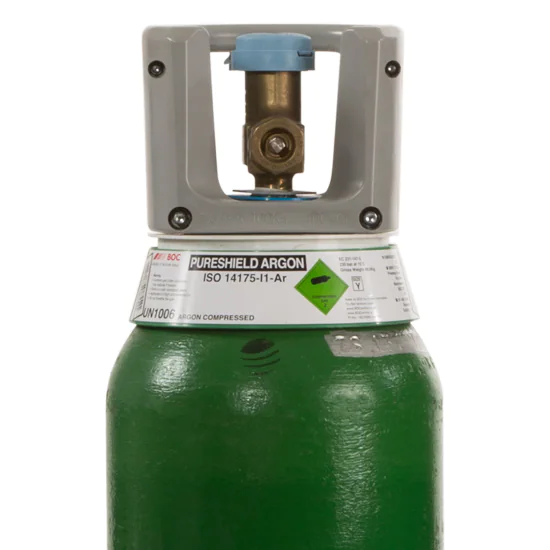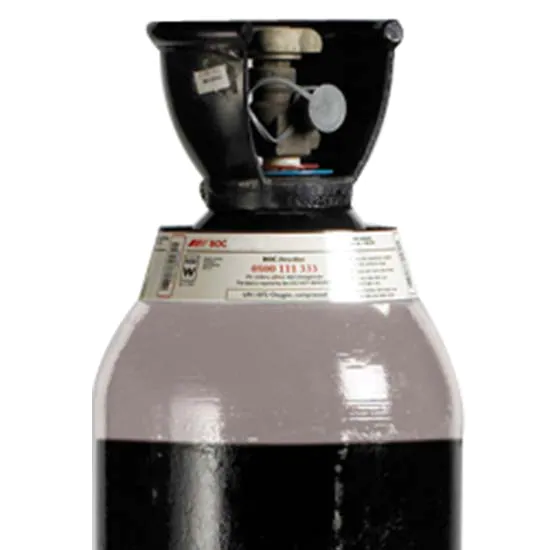$542.95 – $729.36
Key Features:
A refrigerant is a working fluid used in the refrigeration cycle of air conditioning systems and heat pumps where, in most cases they undergo a repeated phase transition from a liquid to a gas and back again. Refrigerants are heavily regulated due to their toxicity, flammability and the contribution of CFC and HCFC refrigerants to ozone depletion and the contribution of HFC refrigerants to climate change. Buy Pure Argon Cylinders
Pure gases are classified by grade.
The first digit of the grade classification indicates the ‘number of nines’ purity, e.g. N3.0 = 99.9% purity.
The second digit is the number following the last nine, e.g. N4.6 helium has a guaranteed minimum purity level of 99.996%.
| Grade | Minimum purity | Total impurities |
|---|---|---|
| N2.0 | 99% | 1% |
| N3.0 | 99.9% | 1000ppm |
| N4.0 | 99.99% | 100vpm |
| N5.0 | 99.999% | 10vpm |
| N6.0 | 99.9999% | 1vpm |
| N7.0 | 99.99999% | 100vpb |
Refrigerants are used in a direct expansion (DX) system to transfer energy from one environment to another, typically from inside a building to outside (or vice versa) commonly known as an “air conditioner” or “heat pump”. Refrigerants can carry per kg 10 times more energy than water and 50 times more than air. Argon Cylinders For Sale Online
In some countries, refrigerants are controlled substances due to high pressures (700–1,000 kPa (100–150 psi)), extreme temperatures (−50 °C [−58 °F] to over 100 °C [212 °F]), flammability (A1 class non-flammable, A2/A2L class flammable and A3 class extremely flammable/explosive) and toxicity (B1-low, B2-medium & B3-high), as classified by ISO 817 & ASHRAE 34.
Refrigerants must only be handled by qualified/certified engineers to the relevant classes of refrigerant (in the UK, C&G 2079 for A1-class, amd C&G 6187-2 for A2/A2L & A3 class refrigerants).
Refrigerants with very low climate impact – Argon Cylinders
With increasing regulations, refrigerants with a very low global warming potential are expected to play a dominant role in the 21st century, in particular, R-290 and R-1234yf. Starting from almost no market share in 2018, low GWPO devices are gaining market share in 2022.
| Code | Chemical | Name | GWP 20yr | GWP 100yr | Status | Commentary |
|---|---|---|---|---|---|---|
| R-290 | C3H8 | Propane | 3.3 | Increasing use | Low cost, widely available and efficient. They also have zero ozone depletion potential. Despite their flammability, they are increasingly used in domestic refrigerators and heat pumps. In 2010, about one-third of all household refrigerators and freezers manufactured globally used isobutane or an isobutane/propane blend, and this was expected to increase to 75% by 2020. | |
| R-600a | HC(CH3)3 | Isobutane | 3.3 | Widely used | See R-290. | |
| R-717 | NH3 | Ammonia | 0 | 0 | Widely used | Commonly used before the popularisation of CFCs, it is again being considered but does suffer from the disadvantage of toxicity, and it requires corrosion-resistant components, which restricts its domestic and small-scale use. Anhydrous ammonia is widely used in industrial refrigeration applications and hockey rinks because of its high energy efficiency and low cost. |
| R-1234yf HFO-1234yf | C3H2F4 | 2,3,3,3-Tetrafluoropropene | <1 | Less performance but also less flammable than R-290. GM announced that it would start using “hydro-fluoro olefin”, HFO-1234yf, in all of its brands by 2013. | ||
| R-744 | CO2 | Carbon dioxide | 1 | 1 | In use | Was used as a refrigerant prior to the discovery of CFCs (this was also the case for propane) and now having a renaissance due to it being non-ozone depleting, non-toxic and non-flammable. It may become the working fluid of choice to replace current HFCs in cars, supermarkets, and heat pumps. Coca-Cola has fielded CO2-based beverage coolers and the U.S. Army is considering CO2 refrigeration. Due to the need to operate at pressures of up to 130 bars (1,900 psi; 13,000 kPa), CO2 systems require highly resistant components, however these have already been developed for mass production in many sectors. |
Most used – Argon Cylinders
| Code | Chemical | Name | Global warming potential 20yr | GWP 100yr | Status | Commentary |
|---|---|---|---|---|---|---|
| R-32 HFC-32 | CH2F2 | Difluoromethane | 2430 | 677 | Widely used | Promoted as climate-friendly substitute for R-134a and R-410a, but still with high climate impact. Has excellent heat transfer and pressure drop performance, both in condensation and vaporisation. It has an atmospheric lifetime of nearly 5 years. Currently used in residential and commercial air-conditioners and heat pumps. |
| R-134a HFC-134a | CH2FCF3 | 1,1,1,2-Tetrafluoroethane | 3790 | 1550 | Widely used | Most used in 2020 for hydronic heat pumps in Europe and the United States in spite of high GWP. Commonly used in automotive air conditioners prior to phase-out, which began in 2012. |
| R-410a | 50% R-32 / 50% R-125 (pentafluoroethane) | Between 2430 (R-32) and 6350 (R-125) | > 677 | Widely Used | Most used in split heat pumps / AC by 2018. Almost 100% share in the USA. |
Banned / Phased out
| Code | Chemical | Name | Global warming potential 20yr | GWP 100yr | Status | Commentary |
|---|---|---|---|---|---|---|
| R-11 CFC-11 | CCl3F | Trichlorofluoromethane | 6900 | 4660 | Banned | Production was banned in developed countries by Montreal Protocol in 1996 |
| R-12 CFC-12 | CCl2F2 | Dichlorodifluoromethane | 10800 | 10200 | Banned | Also known as Freon, a widely used chlorofluorocarbon halomethane (CFC). Production was banned in developed countries by Montreal Protocol in 1996, and in developing countries (article 5 countries) in 2010. |
| R-22 HCFC-22 | CHClF2 | Chlorodifluoromethane | 5280 | 1760 | Being phased out | A widely used hydrochlorofluorocarbon (HCFC) and powerful greenhouse gas with a GWP equal to 1810. Worldwide production of R-22 in 2008 was about 800 Gg per year, up from about 450 Gg per year in 1998. R-438a (MO-99) is a R-22 replacement. |
| R-123 HCFC-123 | CHCl2CF3 | 2,2-Dichloro-1,1,1-trifluoroethane | 292 | 79 | US phase-out | Used in large tonnage centrifugal chiller applications. All U.S. production and import of virgin HCFCs will be phased out by 2030, with limited exceptions. R-123 refrigerant was used to retrofit some chiller that used R-11 refrigerant Trichlorofluoromethane. The production of R-11 was banned in developed countries by Montreal Protocol in 1996. |
| Code | Chemical | Name | Global warming potential 20yr | GWP 100yr | Commentary |
|---|---|---|---|---|---|
| R-152a HFC-152a | CH3CHF2 | 1,1-Difluoroethane | 506 | 138 | As a compressed air duster |
| R-407c | Mixture of difluoromethane and pentafluoroethane and 1,1,1,2-tetrafluoroethane | A mixture of R-32, R-125, and R-134a | |||
| R-454B | Difluoromethane and 2,3,3,3-Tetrafluoropropene | HFOs blend of refrigerants Difluoromethane (R-32) and 2,3,3,3-Tetrafluoropropene (R-1234yf). | |||
| R-513A | An HFO/HFC blend (56% R-1234yf/44%R-134a) | May replace R-134a as an interim alternative | |||
| R-514a | HFO-1336mzz-Z/trans-1,2- dichloroethylene (t-DCE) | An hydrofluoroolefin (HFO)-based refrigerant to replace R-123 in low pressure centrifugal chillers for commercial and industrial applications. |
Refrigerant reclamation and disposal
Coolant and refrigerants are found throughout the industrialized world, in homes, offices, and factories, in devices such as refrigerators, air conditioners, central air conditioning systems (HVAC), freezers, and dehumidifiers. When these units are serviced, there is a risk that refrigerant gas will be vented into the atmosphere either accidentally or intentionally, hence the creation of technician training and certification programs in order to ensure that the material is conserved and managed safely. Mistreatment of these gases has been shown to deplete the ozone layer and is suspected to contribute to global warming.
With the exception of isobutane and propane (R600a, R441a and R290), ammonia and CO2 under Section 608 of the United States’ Clean Air Act it is illegal to knowingly release any refrigerants into the atmosphere.
Refrigerant reclamation is the act of processing used refrigerant gas which has previously been used in some type of refrigeration loop such that it meets specifications for new refrigerant gas. In the United States, the Clean Air Act of 1990 requires that used refrigerant be processed by a certified reclaimer, which must be licensed by the United States Environmental Protection Agency (EPA), and the material must be recovered and delivered to the reclaimer by EPA-certified technicians. Argon Cylinders Near Me
| Cylinder Size | V (2.11m3), L (10.57m3) |
|---|
Be the first to review “Argon Cylinders N5.5 (Research Grade Ar)” Cancel reply
Related products
Nitrogen Gas
Compressed Air
Carbon Dioxide















Reviews
There are no reviews yet.